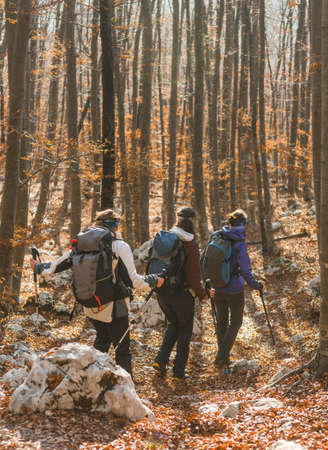Introduction to Virginia Woolf and the Bloomsbury Group
Virginia Woolf stands as a towering figure in twentieth-century British literature, renowned not only for her innovative narrative techniques but also for her deep engagement with social and cultural change. Born in 1882, Woolf’s formative years were spent amidst the intellectual circles of London, a milieu that would later crystallise into the influential Bloomsbury Group. This collective, comprising writers, artists, and thinkers such as E.M. Forster, Lytton Strachey, Vanessa Bell, and Roger Fry, was centred around a shared ethos: a commitment to artistic experimentation, personal freedom, and progressive values that challenged Victorian conventions. The Bloomsbury Group’s gatherings were marked by spirited debate and creative collaboration, fostering an environment where new literary forms could flourish. Their legacy endures in the fabric of British culture—not merely through their published works but also through their advocacy for gender equality, pacifism, and modernist aesthetics. Today, their impact is particularly palpable in Sussex, where Woolf’s connection to the landscape and her literary explorations continue to inspire readers and walkers alike along the storied Downs.
2. The Sussex Downs: Literary Landscape and Significance
The Sussex Downs, with their rolling chalk hills, ancient woodlands, and panoramic coastal views, form a landscape that is both quintessentially English and deeply evocative for those attuned to its quiet power. For Virginia Woolf and the Bloomsbury Group, this region was far more than a picturesque retreat; it was a living muse whose physical contours and atmospheric moods profoundly shaped their literary output. The interplay between land and literature in the South Downs is a testament to how environment can inform creativity, offering both solace and stimulation to some of the twentieth century’s most influential writers.
The Geography of Inspiration
The South Downs stretch from Winchester to Eastbourne, but it is the Sussex segment—particularly around Rodmell, Charleston, and Firle—that held special meaning for Woolf and her circle. The undulating hills, punctuated by beech woods and wildflower meadows, provided not only scenic beauty but also a sense of seclusion and intellectual freedom. Woolf’s walks across these downs are frequently referenced in her diaries and letters; she often described how the open landscape cleared her mind and prompted new ideas.
Key Features of the Sussex Downs in Bloomsbury Writings
| Landscape Feature | Literary Representation | Associated Writer(s) |
|---|---|---|
| Chalk Hills & Vistas | Symbolism of clarity, openness, existential reflection | Virginia Woolf (e.g., “To the Lighthouse”) |
| Ancient Woodlands | Metaphors for memory, history, complexity of thought | E.M. Forster, Leonard Woolf |
| Coastal Cliffs & Sea Views | Evocations of freedom, escape, impermanence | Vanessa Bell (art), Roger Fry (criticism) |
| Village Life (Rodmell, Firle) | Exploration of community, tradition versus modernity | Virginia Woolf (“Between the Acts”) |
Cultural and Creative Significance
The South Downs were not merely a backdrop but an active participant in the creative process of the Bloomsbury Group. The landscape fostered a unique intellectual climate—a blend of rural tranquility and radical thought—which enabled experimentation across art forms. In works such as “Orlando” and “Between the Acts,” Woolf weaves the rhythms of rural life and the symbolism of the downs into narratives that challenge conventional boundaries of time and identity. The very act of walking across these fields became a metaphor for mental exploration—a motif echoed throughout Bloomsbury literature.
A Lasting Legacy in Literature
Today, tracing the footpaths once frequented by Woolf and her peers offers more than historical interest; it provides insight into the symbiotic relationship between place and imagination. The Sussex Downs continue to inspire writers, artists, and walkers alike—serving as both setting and symbol within Britain’s rich literary tapestry.

3. Key Bloomsbury Locations: Guided Walking Routes
Embarking on a literary hike through the Sussex Downs offers an unparalleled opportunity to experience the landscapes that inspired Virginia Woolf and her contemporaries within the Bloomsbury Group. The region’s rich tapestry of footpaths connects several pivotal sites, most notably Monk’s House in Rodmell and Charleston Farmhouse near Firle, both of which served as creative retreats for this influential circle.
Monk’s House Circular Walk
The journey begins at Monk’s House, Virginia Woolf’s cherished country home nestled in the tranquil village of Rodmell. From here, walkers can follow a well-marked circular route encompassing the River Ouse and South Downs Way. This moderate hike not only takes in panoramic vistas over Lewes but also provides insight into Woolf’s daily routines, as she often strolled these very paths to gather inspiration for her writing. Information boards along the route offer context about her life and literary achievements, making it an immersive educational experience.
Charleston to Berwick Church Trail
From Charleston Farmhouse—home to Vanessa Bell and a vibrant hub for Bloomsbury gatherings—a picturesque trail leads towards Berwick Church. Along this route, hikers are treated to scenes that influenced artists and writers alike. Of special note is Berwick Church itself, famous for its murals painted by Duncan Grant and Vanessa Bell. This walk blends rural charm with artistic heritage, allowing visitors to reflect on how the surrounding countryside shaped modernist thought.
Linking the Sites: The South Downs Literary Loop
For those seeking a more ambitious itinerary, the South Downs Literary Loop connects Monk’s House and Charleston via established public footpaths. This full-day hike navigates rolling chalk hills, ancient woodlands, and quintessential English villages. Throughout the journey, guided notes highlight passages from Bloomsbury correspondence and literature directly referencing local landmarks. These curated routes encourage walkers to engage deeply with both landscape and legacy, fostering a profound appreciation for how place informed the group’s creative output.
4. Reading Woolf in Place: Excerpts and Reflection Points
One of the most profound ways to engage with the Sussex Downs is to experience Virginia Woolf’s writing—and that of her Bloomsbury contemporaries—in situ. By pairing carefully selected excerpts with specific locations along the trail, hikers are invited to immerse themselves in both the landscape and the literature, gaining a deeper understanding of how place shaped creative expression.
Handpicked Readings and Trail Locations
| Trail Stop | Literary Excerpt | Reflection Point |
|---|---|---|
| Monk’s House Garden Gate | “To walk alone in London is the greatest rest.” –Street Haunting: A London Adventure | Consider how Woolf’s walks in Sussex differed from those in London. Reflect on solitude and observation in rural versus urban settings. |
| South Downs Ridge Viewpoint | “I see myself as a fish in a stream; deflected by obstacles, but always carried on.” –The Waves | Ponder the metaphor of movement and flow within nature. How does the undulating landscape mirror Woolf’s narrative style? |
| Charleston Farmhouse Orchard | “It was an atmosphere, a vibration, compounded of many things…” – Vanessa Bell (letters) | Reflect on the communal creativity fostered at Charleston. What sensory impressions do you notice here that might have inspired Bloomsbury artists? |
| River Ouse Banks | “The river flowed beneath…its surface reflecting clouds.” –Between the Acts | Meditate on themes of continuity and change. How does water serve as a motif for memory and time in Woolf’s work? |
Integrating Literary Reflection into Your Walk
To fully appreciate these readings, pause at each spot, read aloud or silently, and allow your surroundings to inform your interpretation. The interplay between text and terrain enables a form of literary pilgrimage, unique to Sussex, where the written word is anchored firmly in its original context.
Practical Tips for Reflective Hikers
- Bring a small anthology: Select passages beforehand or use a dedicated guidebook for literary walkers.
- Journal your thoughts: Carry a notebook to jot down personal insights prompted by each location and excerpt.
- Savour silence: Take moments to simply listen to the Downs—birds, wind, distant voices—between readings.
Cultural Note
This approach not only celebrates British literary heritage but also encourages mindful engagement with landscape—a value deeply embedded in local walking culture across Sussex and broader England.
5. Practical Tips for Walkers
Embarking on a literary hike in the Sussex Downs, following in the footsteps of Virginia Woolf and the Bloomsbury Group, is an enriching experience. However, to make the most of these countryside walks, thoughtful preparation and respect for local customs are essential. Below, you will find practical advice rooted in British walking culture.
Preparing for Your Walk
The undulating landscapes of the South Downs can be both invigorating and challenging. Ensure you plan your route in advance; many trails are well-marked but carrying an Ordnance Survey map or downloading a reputable walking app is highly recommended. Inform someone about your intended route and expected return time, especially if you are venturing alone.
Weather Considerations
British weather is famously unpredictable, and Sussex is no exception. Always check the forecast before setting out. Even on seemingly bright days, pack a lightweight waterproof jacket and dress in layers that can be easily adjusted as conditions change. During autumn and winter months, daylight hours are short, so begin early to avoid being caught out after dark.
Recommended Kit
Sturdy, waterproof walking boots are indispensable on chalky or muddy paths common to the Downs. A comfortable daypack should include water, snacks (a thermos with tea is a very British touch), a fully charged mobile phone, sun protection, and a small first aid kit. Binoculars can enhance your enjoyment of local wildlife and sweeping views.
Local Customs and Etiquette
The countryside code is a cornerstone of British rural life: close gates behind you, keep dogs under control—especially near livestock—and stick to marked footpaths to protect crops and wildlife habitats. Greet fellow walkers with a friendly “hello” or nod; this simple courtesy is part of the charm of rural England. Avoid playing loud music or leaving litter; many locals and visitors alike value the tranquillity of these historic landscapes.
Respecting History as You Walk
As you tread paths once frequented by Woolf and her contemporaries, remember that these landscapes inspired some of English literature’s greatest works. Take moments to pause, absorb the scenery, and imagine how the Downs shaped the creativity of the Bloomsbury Group. With careful preparation and mindful behaviour, your walk will be both safe and deeply rewarding.
6. Preserving the Bloomsbury Legacy
The enduring influence of Virginia Woolf and the Bloomsbury Group is nowhere more evident than in the ongoing efforts to preserve their Sussex heritage. Organisations such as the National Trust, alongside local heritage groups, have been instrumental in maintaining sites like Monk’s House and Charleston Farmhouse. These places serve not only as tangible connections to literary history but also as cultural beacons for visitors from across the UK and beyond.
Sussex’s landscape, immortalised in Woolf’s writing, remains a critical component of this legacy. Conservation efforts extend beyond bricks and mortar, encompassing the rolling Downs themselves—ensuring that future generations can walk the same paths that inspired such profound creativity. Local councils and volunteers work tirelessly to maintain footpaths and protect the countryside from overdevelopment, striking a careful balance between access and preservation.
For those wishing to explore these historic sites, responsible tourism is paramount. It is essential to respect both the privacy of remaining residents and the integrity of these unique locations. Visitors are encouraged to follow designated trails, avoid disturbing sensitive areas, and support local initiatives by contributing to conservation funds or participating in guided tours led by knowledgeable local experts.
Moreover, engagement with these sites should go beyond mere sightseeing. By attending exhibitions, lectures, or creative workshops hosted at Charleston and Monk’s House, visitors can gain a deeper understanding of the Bloomsbury ethos—a commitment to artistic innovation, intellectual freedom, and social progressivism that continues to inspire Sussex communities today.
Ultimately, preserving the Bloomsbury legacy is a collective responsibility—one that requires collaboration between heritage organisations, local authorities, and mindful travellers alike. Through these shared efforts, Sussex can continue to celebrate its extraordinary literary past while fostering a sustainable future for all who seek inspiration in its landscapes.


